Campanulas add a very English country garden charm to a traditional border or cottage garden, with their simple bells in shades of blue, white and pink. The bells vary from open saucer to pixie cap to tubular, and all are attractive to bees. There are more than 300 species, including annuals, biennials and perennials, found in temperate areas of the Northern Hemisphere in woodland, meadows and high mountains.
But be warned – you must be selective because some are thuggish and self-seed aggressively, while others invade large patches of ground. Although they can make good choices for wilder areas, they cause havoc in a flower border.
The best border bellflowers are named forms of Campanula lactiflora.
When does campanula flower?
Campanulas generally flower from midsummer to autumn. Deadhead regularly to prolong flowering.
How to grow campanula
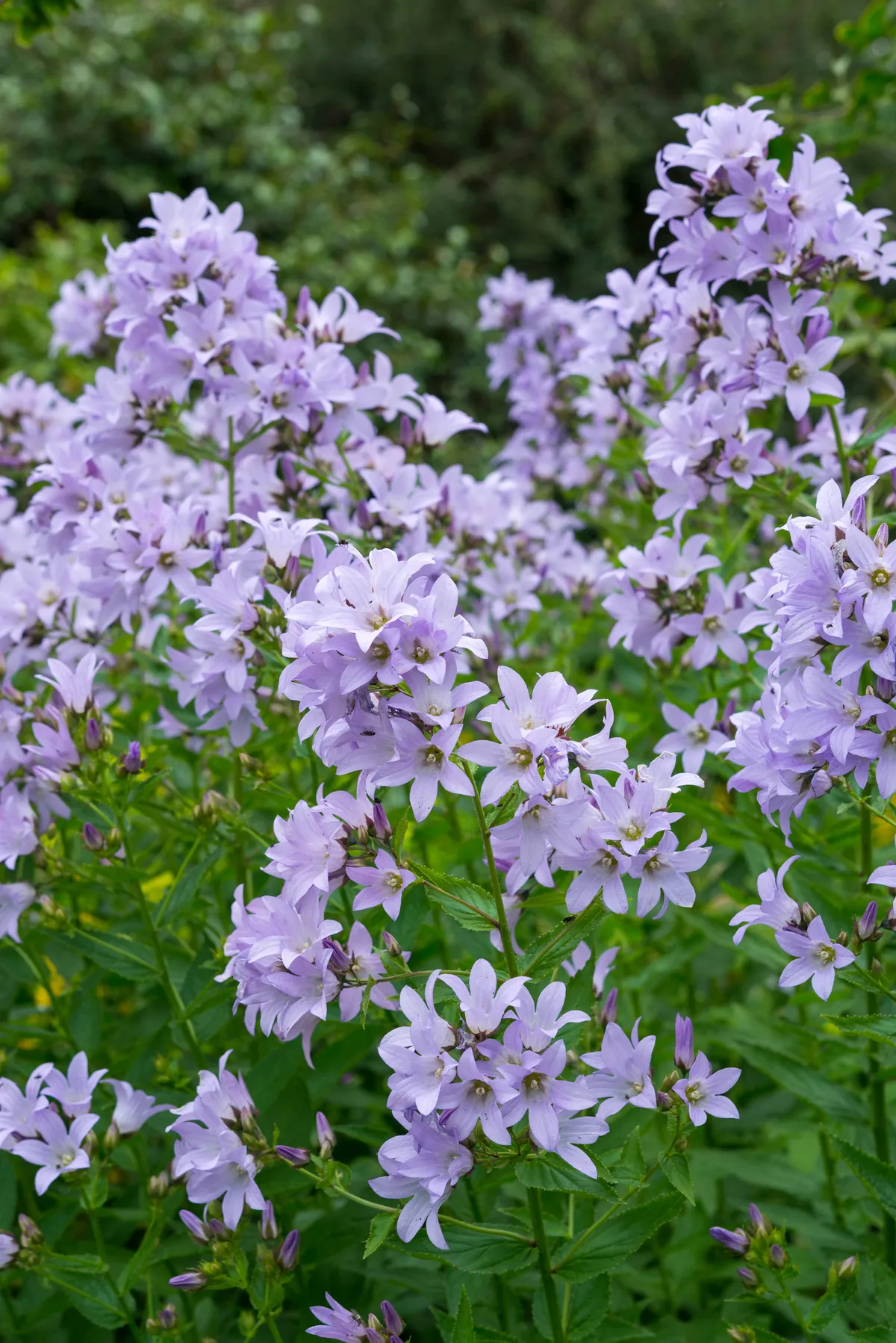
Where to plant campanula
Campanula grows in easily in well-drained conditions in good light, but will not grow in waterlogged or on overfed soil. However, some species do prefer moisture, including Campanula takesimana, Campanula latifolia and Campanula lactiflora.
How to care for campanula
Some campanulas need staking and this must be done when growth is two-thirds complete. However, the floppy Campanula lactiflora cultivars and the wiry-stemmed Campanula persificolia can be supported by planting partners.
Regular propagation from cuttings taken in spring (every third year) is essential if you spot woody, gnarled roots at the base, or sense a lack of vigour. Forms of Campanula lactiflora will fade away if left untended.
How to deadhead campanula
Always deadhead the spent flowers of campanula as they fade, as bellflowers often die back badly, especially the white flowered forms. They also seed around copiously. Deadheading will promote more flowers and will prevent unwanted seedlings. Most can be cut back to the base of the plant. However Campanula lactiflora varieties are deadheaded from the top like roses, so that more flower appears lower down.
If you Campanula lactiflora the Chelsea chop (cut down by a third in late May), it will flower after the main flush of roses. Always cut off the spent upper flowers, then more will appear further down, giving many weeks of flower.
Problems with campanula
Campanulas have bad habits. Some shift about in the garden and move on to fresh ground. Some (such as ‘Pink Octopus’) are aggressive smotherers of other plants. Some form huge woody rootstocks and lose vigour within four years. This is especially true of Campanula lactiflora.
Rust can be a problem, but normally plants recover in the following year.
The best campanula to grow in your garden
Campanula lactiflora 'Prichard's Variety'
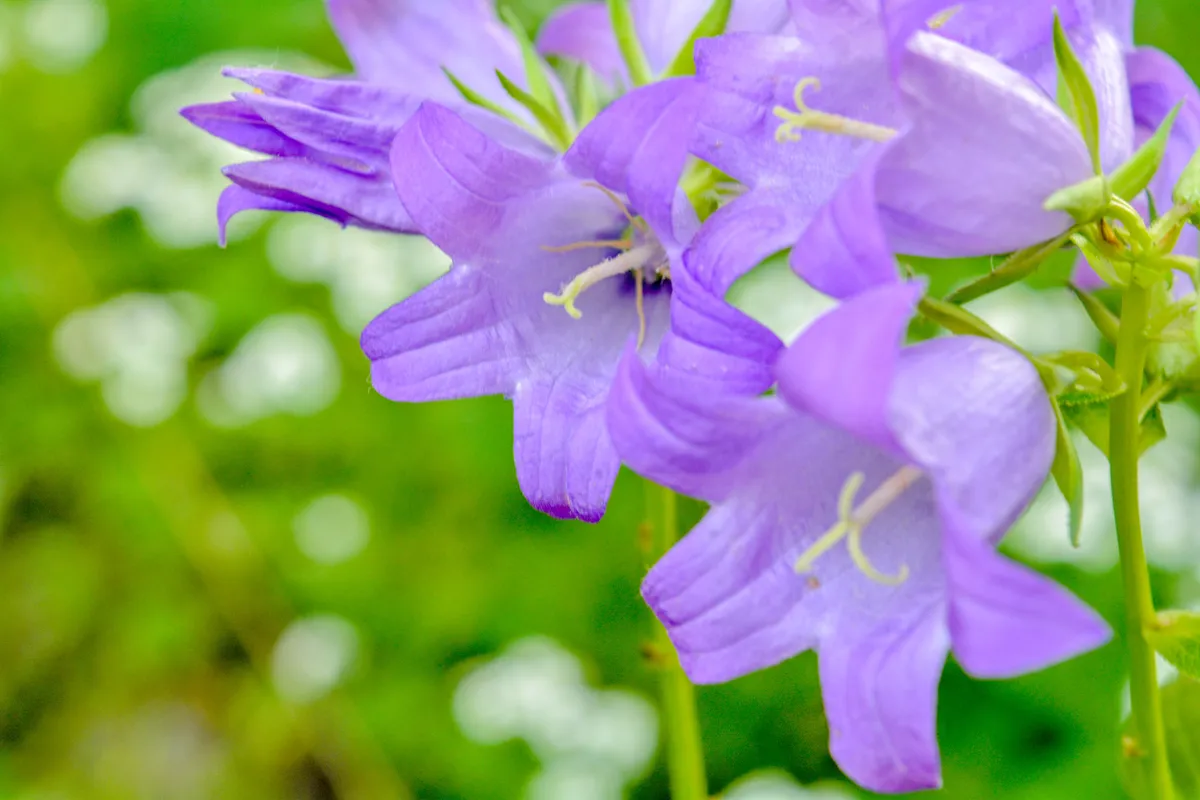
A mop of outward facing bells, rather phlox-like in appearance. Deadhead and propagate from cuttings every third year to retain vigour. Up to 1m. AGM. RHS H7, USDA 3a-9a.
Campanula lactiflora ‘Alba’
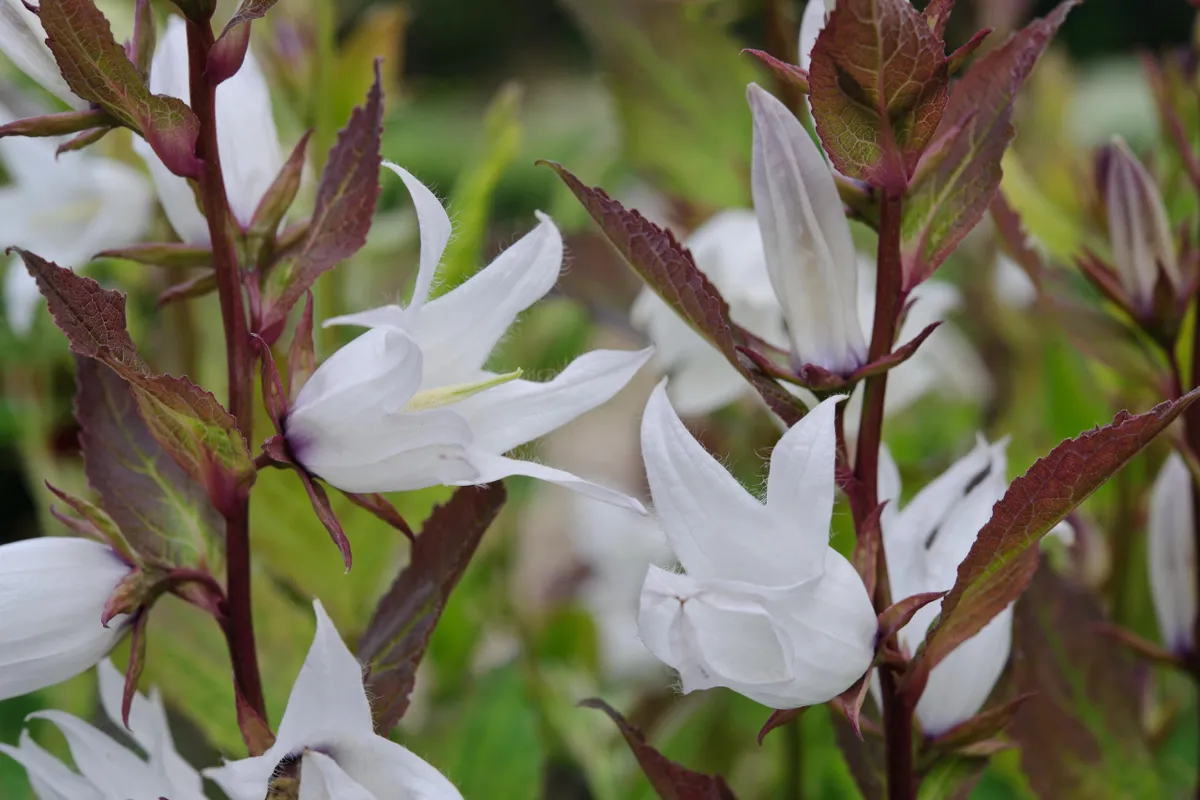
The real, but elusive, cultivar should be pure-white without any touches of blue or grey. Like all white campanulas it browns as it fades. However it is stunning set among dark roses. AGM.
Campanula ‘Kent Belle’
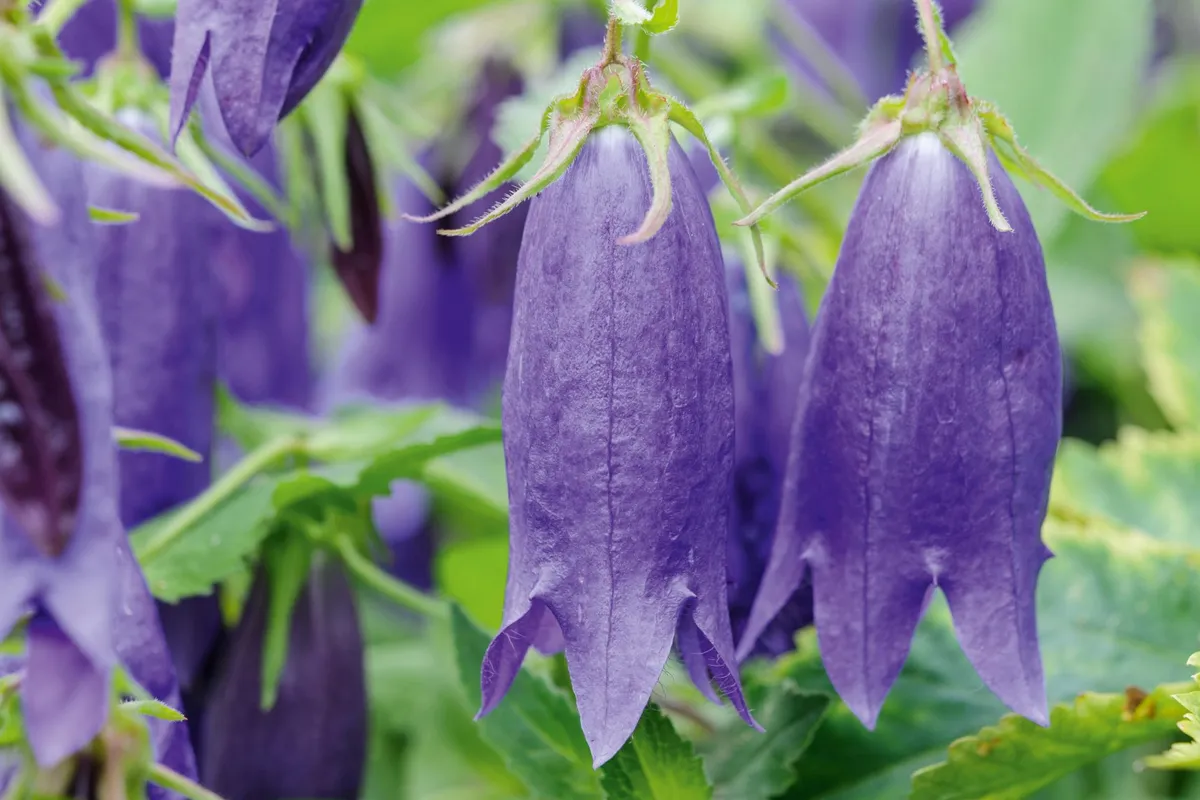
A long-flowering hybrid (Campanula takesimana x Campanula latifolia) found at Elizabeth Strangman’s Washfield Nursery between 1970 and 1980, with glossy deep-violet tubular bells and green foliage. 90cm. AGM. USDA 4b-8a.
Campanula lactiflora ‘Loddon Anna’
A lavender-pink cultivar spotted at Thomas Carlile’s Loddon Nursery in Twyford by his daughter Wendy. It was launched in 1952 the year his granddaughter Anna was born. It’s a weaker grower that’s inclined to fade out so propagate regularly and deadhead as seedlings revert to blue. Up to 1m tall. AGM. RHS H7, USDA 4a-9a.
Campanula alliariifolia
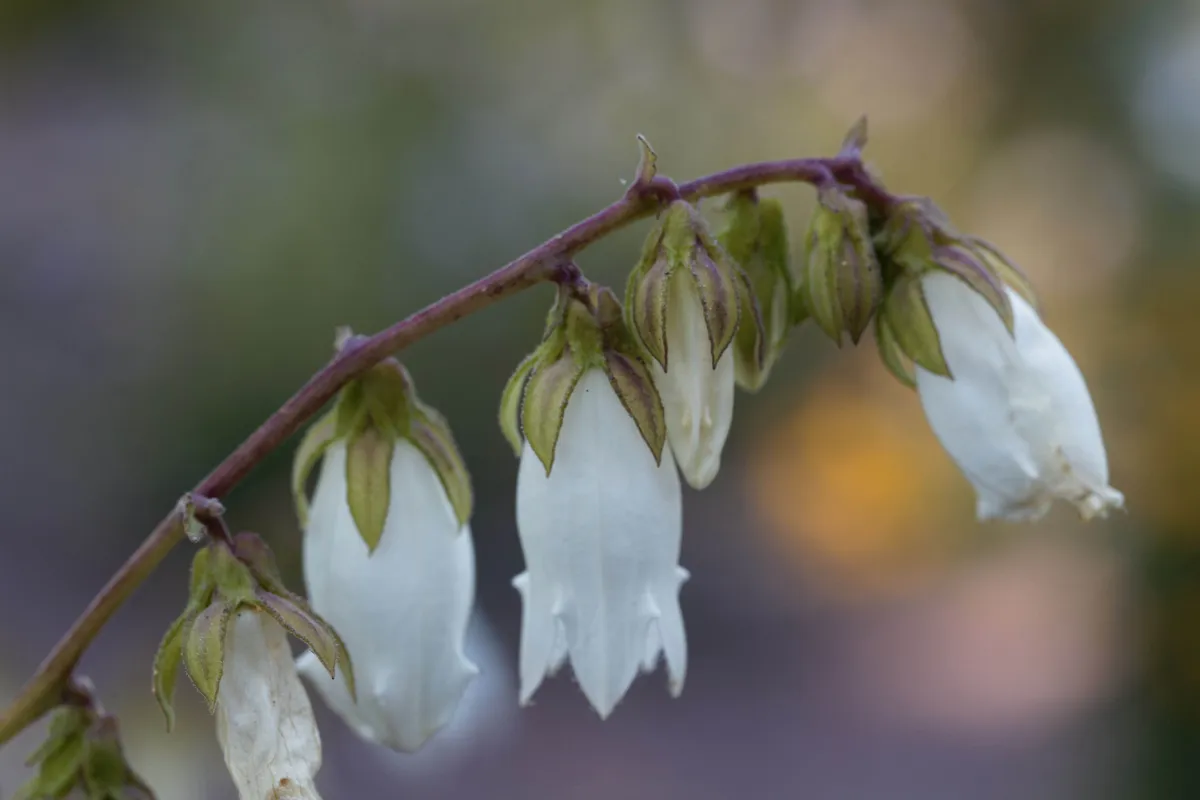
For the wild garden only as this is a terribly invasive self-seeder. The drooping bells hang down from one side of the spike. In the wild it grows in the conifer forests of Turkey, the Caucasus and Anatolia. 60cm. USDA 3a-9a.
Campanula persicifolia
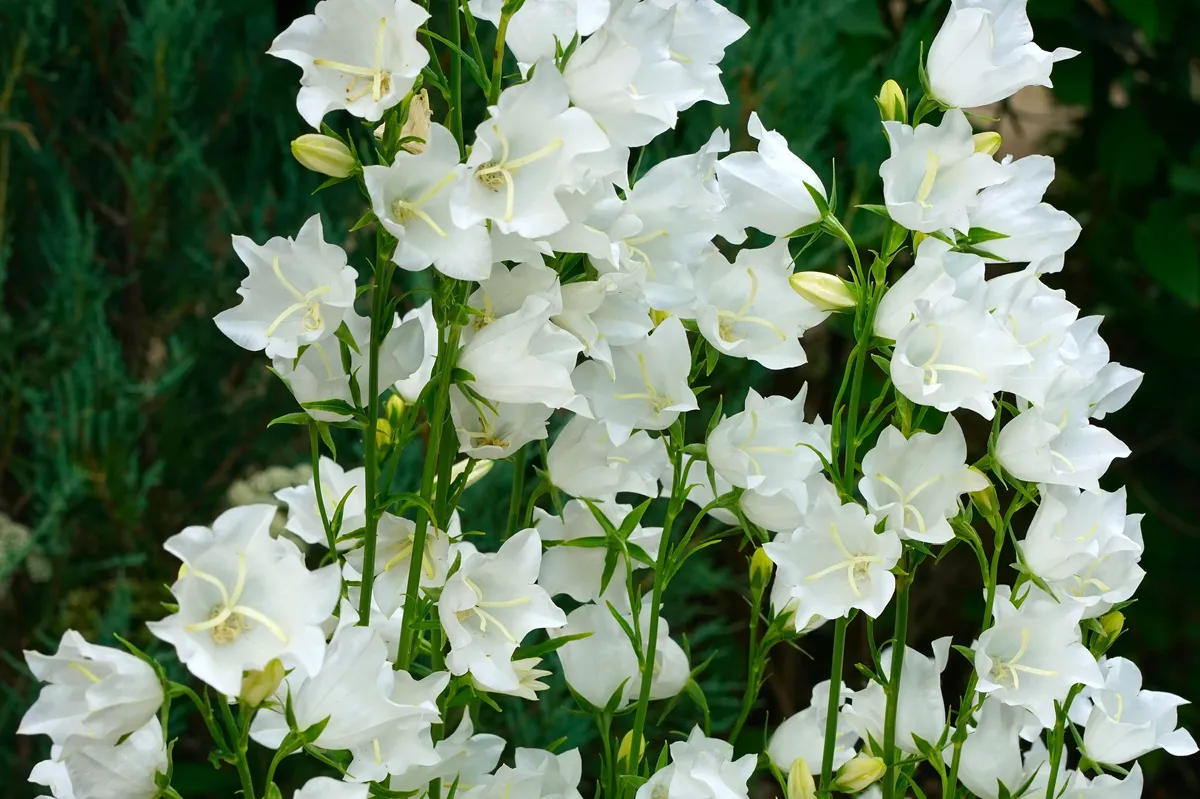
A peach-leaved bellflower that flowers in early summer. Difficult to stake, but it threads through other plants. Fleur de Neige' is a double-flowered variety. Deadhead to prevent the fine seed from settling. 70cm. Recommended by Val Bourne
Campanula ‘Crystal’
Longstanding favourite. The grey-blue tubular flowers appear against a background of purple buds. This sterile hybrid of Campanula punctata and Campanula latifolia, which prefers dappled shade, is long-lived. 60cm. AGM. RHS H7, USDA 4a-8b. Recommended by Val Bourne
Campanula ‘Purple Sensation’
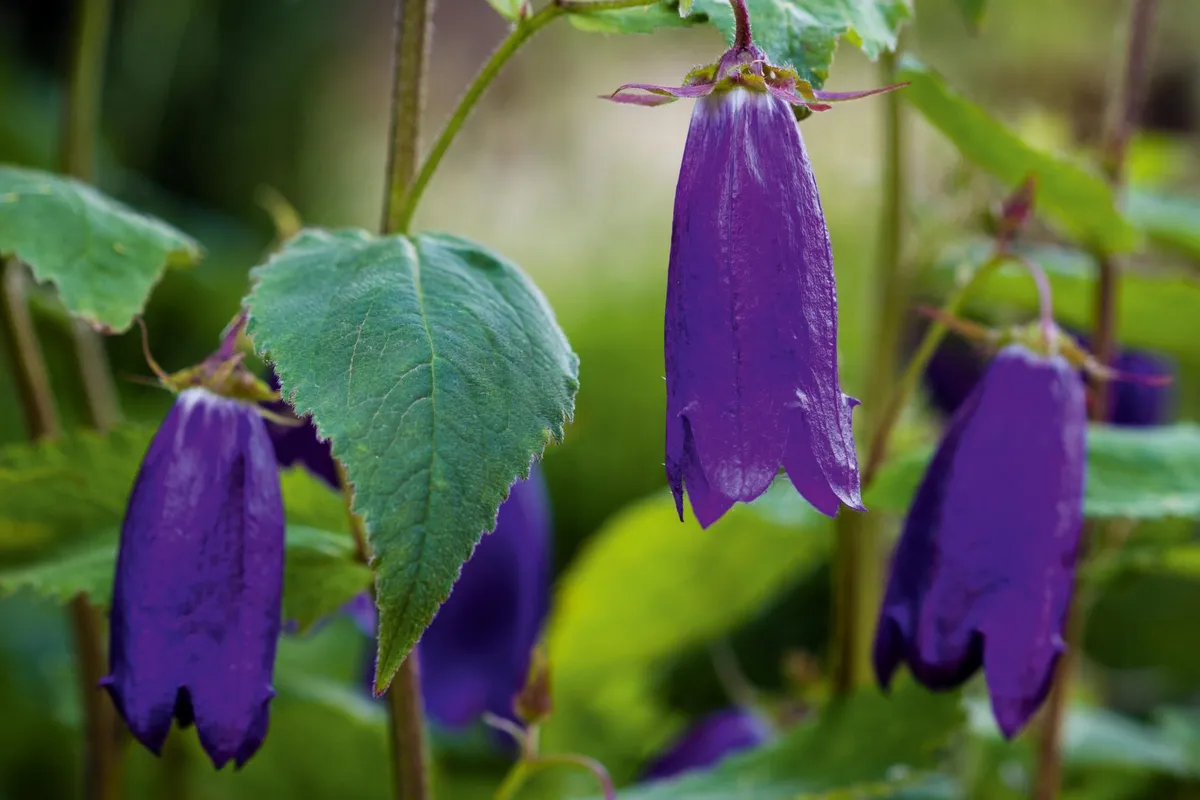
Dark-purple flowers emerge from near-black buds and hang in great profusion. 60cm. USDA 3a-6b.
Campanula glomerata ‘Emerald’
A clustered bellflower named for its green foliage, with pale sky-blue flowers tinted in lavender pink. Campanula ‘Caroline’ is similar, but with pinker flowers. Both will stray and both can disappear. 60cm. USDA 3a-8b.
Campanula punctata 'Rubriflora'
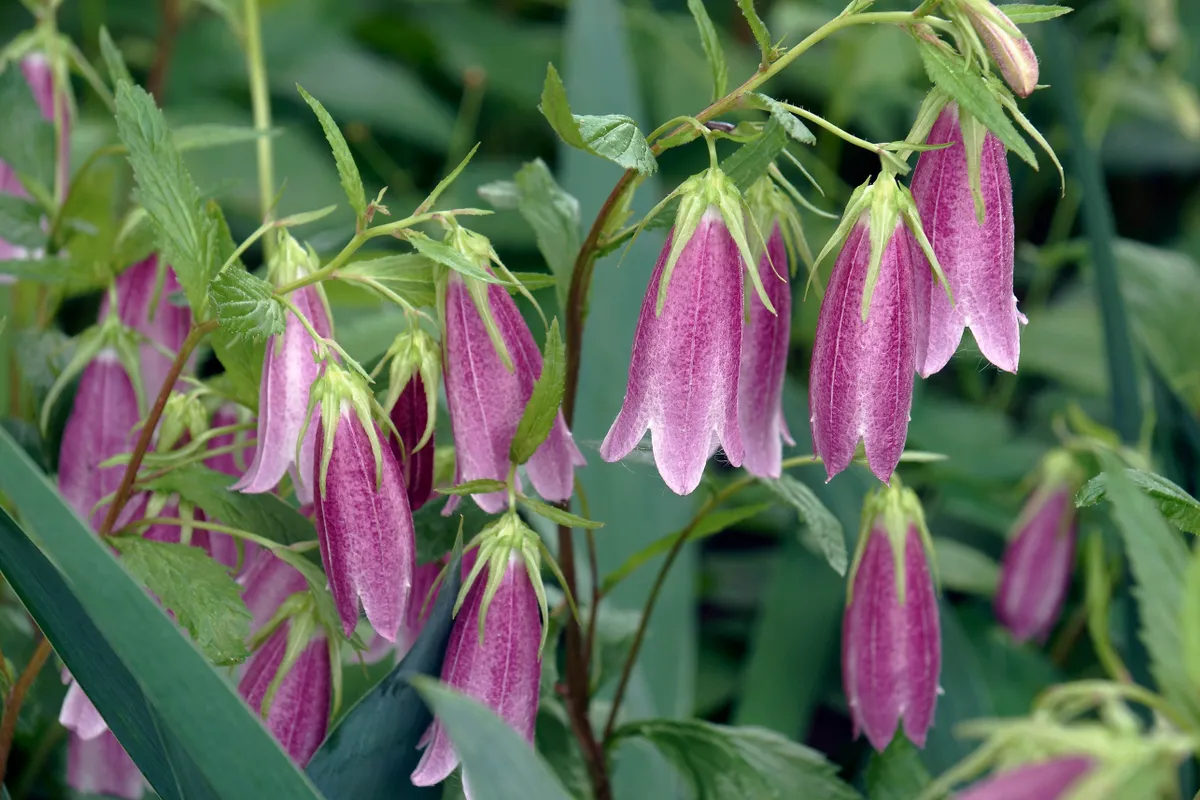
Found in Siberia, China and Japan, this produces long tubular bells in dusky pink. The foliage spreads and there never seems to be enough flowers. Dark ruby selections and doubles exist. 45cm upwards. USDA 4a-9b. Recommended by Val Bourne
Campanula takesimana ‘Elizabeth’
The deep-pink long bell, selected by nurserywoman Elizabeth Strangman, is a brighter colour and the handsome, heart-shaped foliage is often darkly veined. It can be invasive, but can also disappear. 60-90cm. USDA 4a-10a.
Campanula persicifolia ‘Hampstead White’
Considered the finest white peach-leaved cultivar on the RHS Trial. Green buds open to elegant cup and saucer-shaped doubles held on strong stems providing four weeks of flower. The linear foliage is green and healthy. 70cm. Recommended by Val Bourne
Campanula latiloba ‘Hidcote Amethyst’
A pretty lilac-pink cultivar, which is more refined than typical clones. Grown at Hidcote and Kiftsgate in Gloucestershire. Lovely in bud and flower and almost certainly the best form of Campanula latiloba – although all forms will ramble into fresh ground. 1m. RHS H4, USDA 4a-9a. Recommended by Val Bourne
The deep-pink long bell, selected by nursery-woman Elizabeth Strangman, is a brighter colour and the handsome heart-shaped foliage is often darkly veined. It can be invasive, but can also disappear. 60-90cm. USDA 4a-10a. Recommended by Val Bourne
Campanula glomerata ‘Freya’
A new selection made by Arie Blom from a population of Campanula glomerata seedlings. ‘Freya’ has tight clusters of purple flowers. Some think it’s too compact, but it’s rarely out of flower. 45 cm. USDA 3a-8b.
Campanula ‘Sarastro’
A newer hybrid from the Sarastro Nursery in Austria, with 5cm-long dusky purple tubular bells and grey-green foliage. Showy, yet harder to place due to large flowers. Up to 90cm. USDA 4b-8a.
Campanula latiloba ‘Highcliffe Variety’
Stalkless, lavender-violet saucer-shaped flowers held on stiff stems provide two to three weeks of colour in early summer. Can look ragged and coarse after flowering. 1m. AGM. RHS H7, USDA 4a-8b.
Campanula latifolia ‘Eriocarpa’
These elegant campanulas have spires of bell flowers. These colonise the top part of the stem only, supported by leaves, so they can add an airy presence. Campanula ‘Eriocarpa‘ is a neater purple plant of Russian origin, preferring good soil.
Campanula latifolia ‘Buckland’
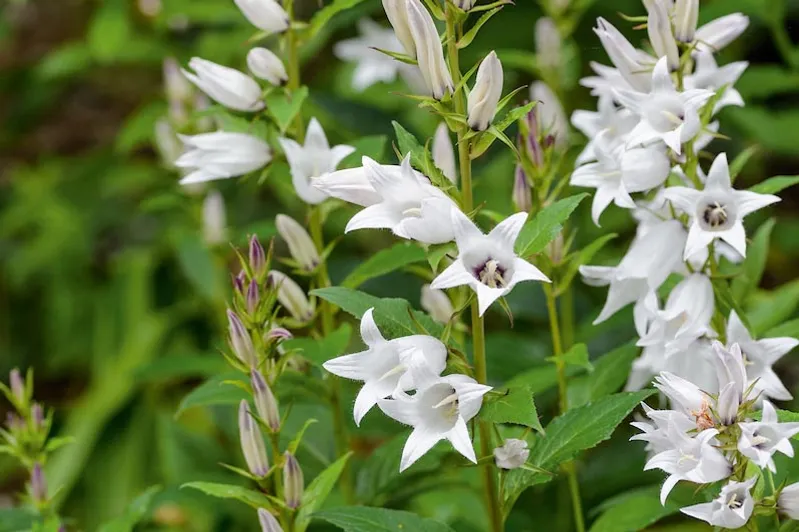
A seedling from the pure-white Campanula latifolia var. alba, the purple eye and faintest flush of that colour in the white, elevates this into a classy looking perennial. 1m. RHS H5, USDA 4a-9b.
Campanula sibirica
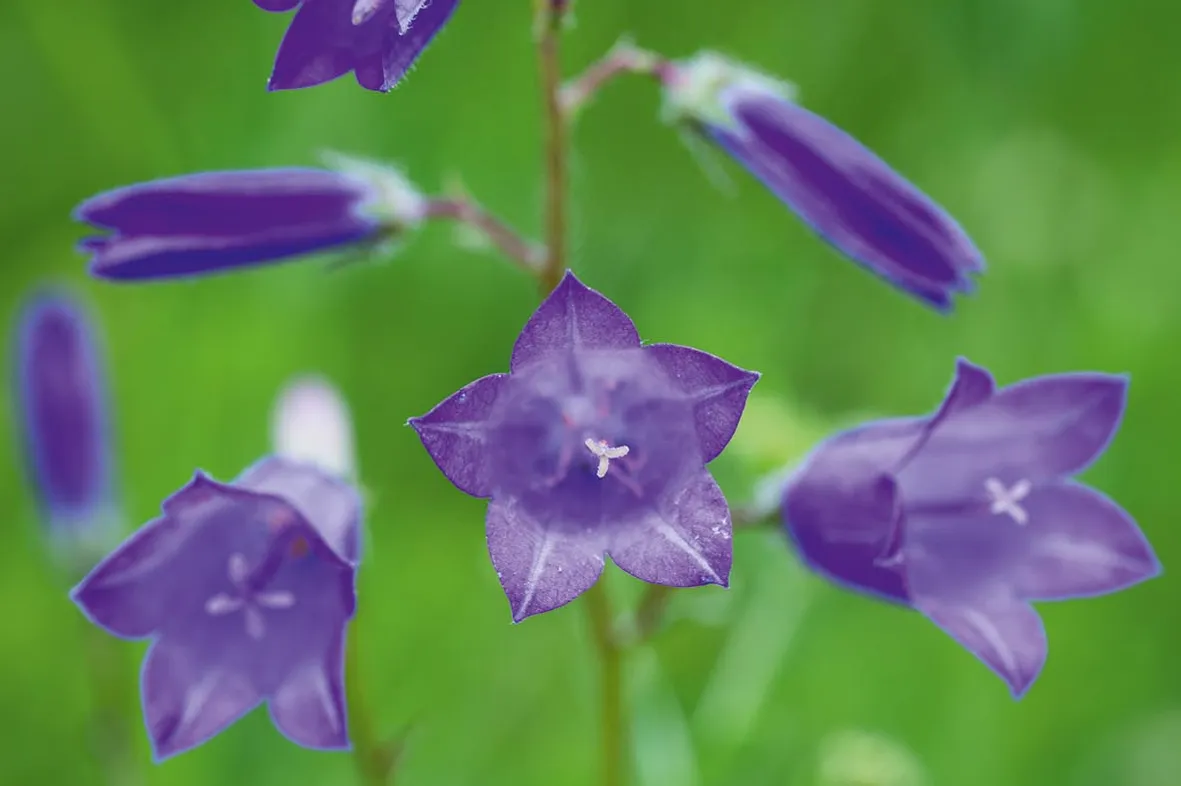
An upright rough, hairy plant found on dry meadows and steppic grassland on sunny slopes and the steep sides of marl hummocks. 20-50cm.